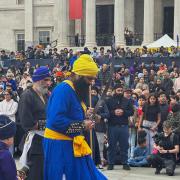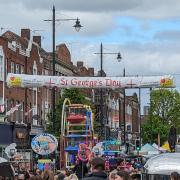
London is undeniably full of a variety of architectural styles from numerous centuries’ worth of immense culture. One prevailing theme of architecture is Gothic, which even resides within Wimbledon. However, does this form of marvellous design remain concealed amongst London’s infinite buildings and congested streets?
The word Gothic has copious connections from literature to fashion, and notably architecture. This pivotal style of architecture emerged in the 12th century, in France and was prominent through the entirety of the proceeding years of the medieval period, throughout Europe. Prime features included: pointed arches, ribbed vaults, gargoyles and flying buttresses; this design existed in cathedrals, abbeys, halls and castles, such as Canterbury Cathedral and Westminster Abbey in England. By the 16th century Gothic architecture faded, yet Gothic revivals began in the 18th century.
A quintessential example of Gothic Revival architecture is Strawberry Hill House in Twickenham, which was built and owned by Horace Walpole (1717 – 1797). Walpole decided to build his own Gothic styled castle in 1747 in order to divert away from what he considered to be continental architecture and appease his personal taste.
“It was built to please my own taste, and in some degree to realise my own visions.”
The castle is subsequently filled with archetypal Gothic features as stated on the Strawberry Hill House website: ‘Chimney pieces, doors and ceilings are based on gothic vaulting, medieval tombs and rose windows. Winding corridors and gloomy passageways open into the sudden splendour of rooms like the Gallery.’ The poet Thomas Gray described it as ‘Gothicism, gold and looking glass.’ Not only did Walpole influence Gothic architecture but also, is considered to be the progenitor of Gothic literature, writing the first Gothic novel ‘The Castle of Otranto’ in 1764. In Gothic fiction it is common for the buildings to be depicted as architecturally Gothic, thus Walpole’s incorporation of an eerie castle with ‘subterranean passages’ and other Gothic features. Yet, Walpole’s real life Gothic castle also played a fundamental role in facilitating the plot for his story. One night Walpole dreamt of a giant armoured fist, inspiring him to write the novel, including and adapting aspects of his dream. When I visited Strawberry Hill House I was truly in awe of its grandeur and extravagance. As well as being outstanding, the gleaming white castle, unquestionably stands outs. Nevertheless, are other works of Gothic architecture easily as detected?
Believe it or not Sacred Heart Church in Wimbledon is also a form of revival Gothic architecture. According to the Sacred Heart website, in 1884 Edith Arendrup commissioned for the Sacred Heart to be built, requesting Frederick Walters to design it in the late Gothic style. In addition, more nationally known buildings, namely Big Ben and the Palace of Westminster are considered to be of Gothic architectural design. However, this is rarely seems to be acknowledged; perhaps it is just insignificant and irrelevant knowledge.
On a whole, it is more than apparent that Gothic architecture is present all over London, playing a significant role within British culture, particularly its history. Therefore, it is in no way irrelevant. Nonetheless, whether or not it is aesthetically appreciated or merely noticed is questionable.
By Lauren Pencil
Ursuline High School



























